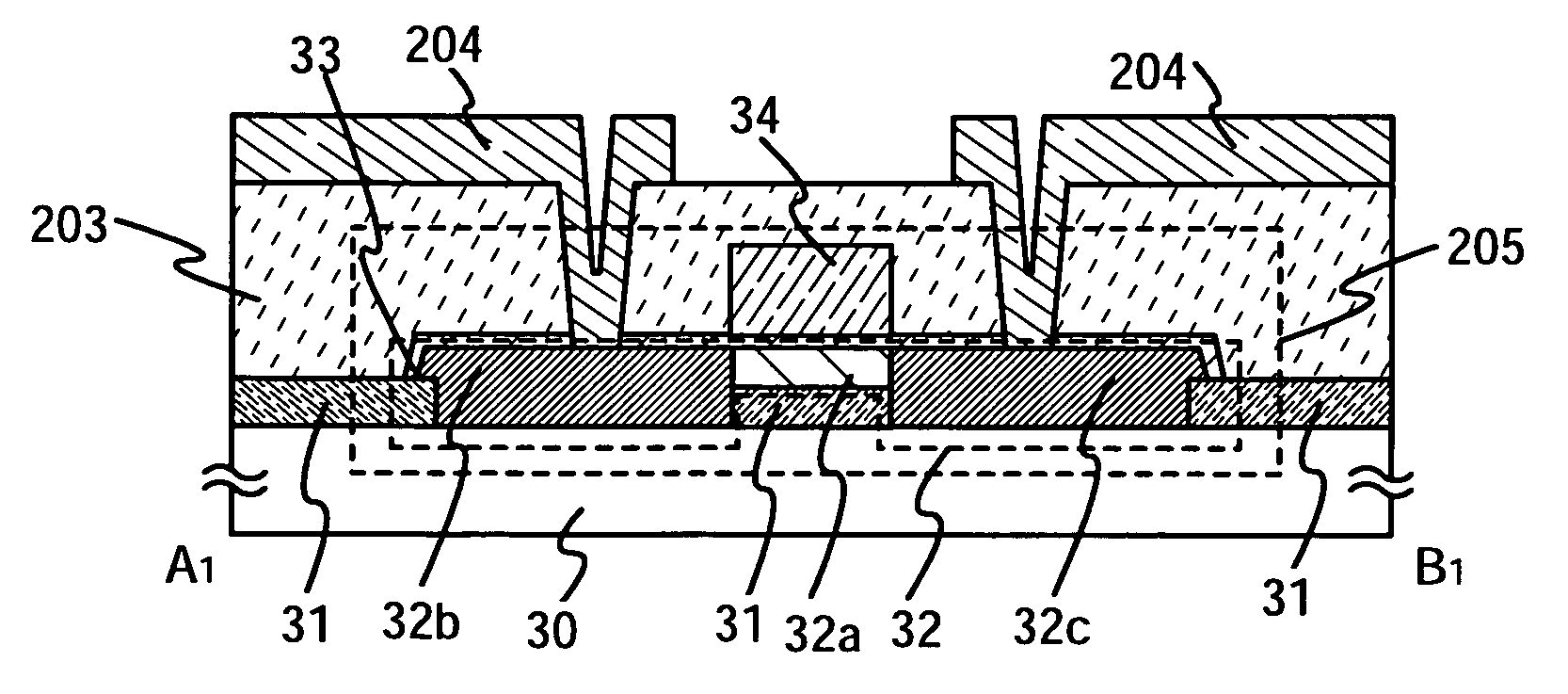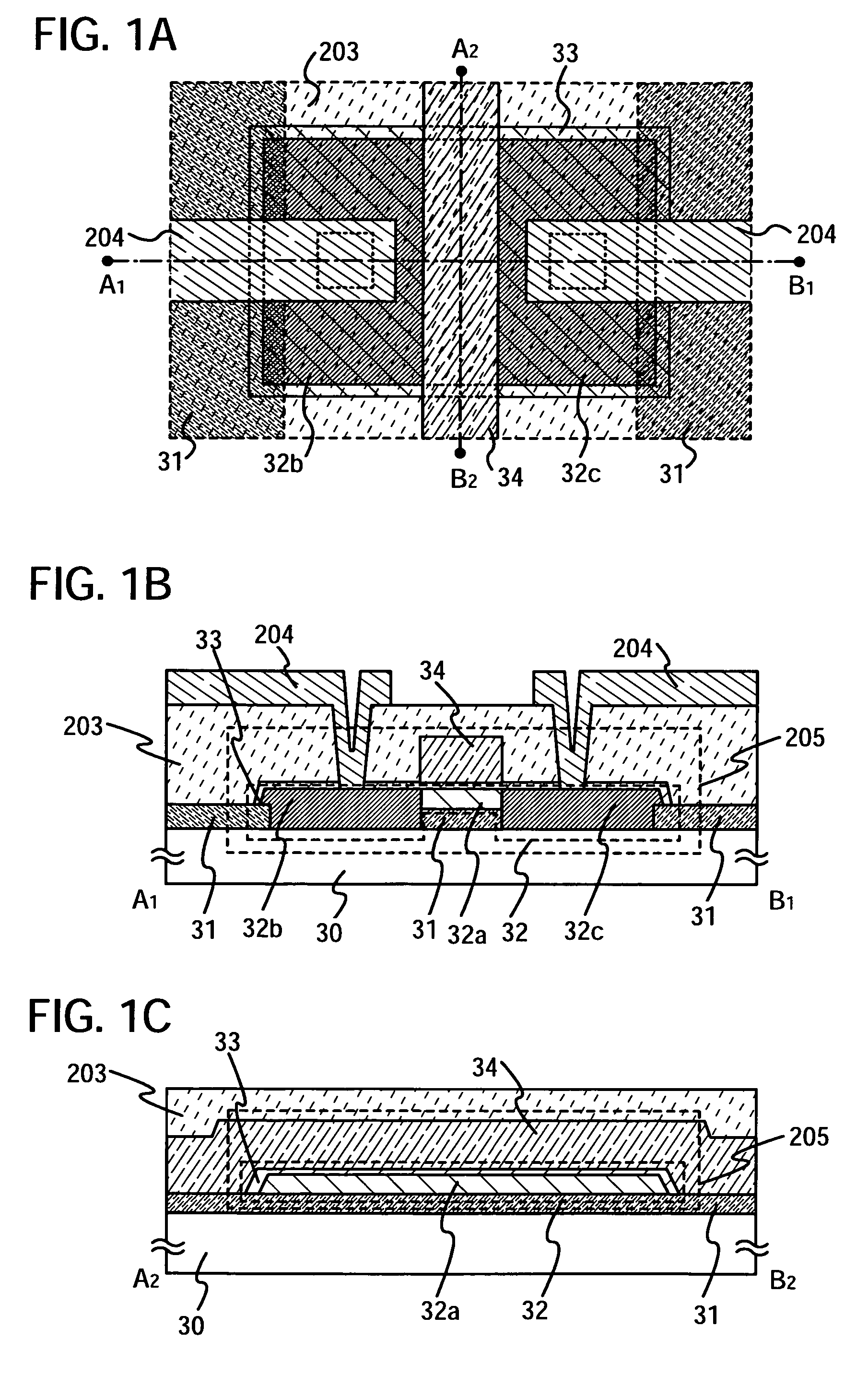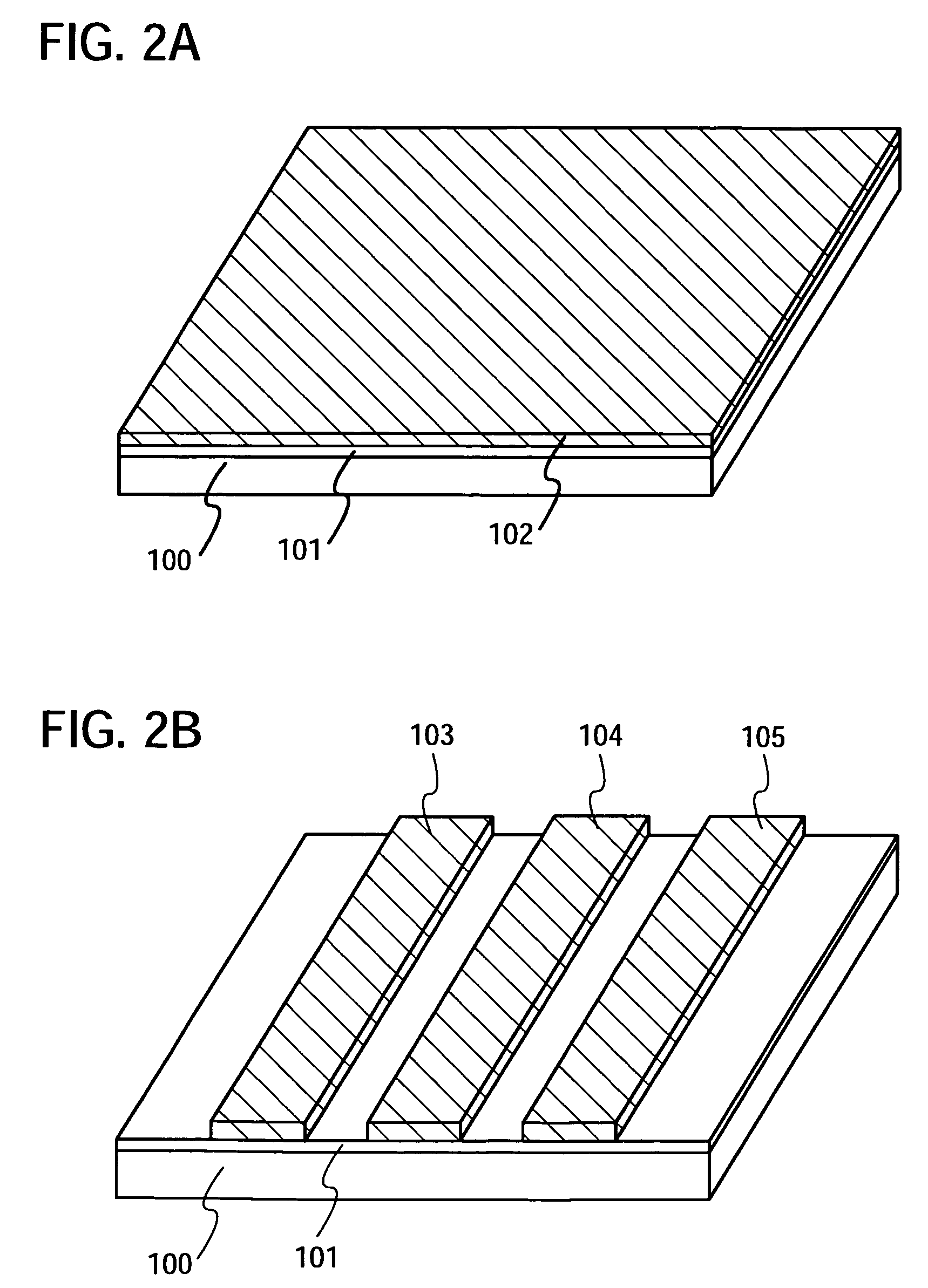Semiconductor device and manufacturing method thereof
a technology of semiconductors and semiconductors, applied in the direction of light-sensitive devices, electrolytic capacitors, coatings, etc., can solve the problems of increasing unstable fabrication process, and reducing the on-state current, so as to reduce the on-state current, reduce the number of steps, and improve the effect of manufacturing method
- Summary
- Abstract
- Description
- Claims
- Application Information
AI Technical Summary
Benefits of technology
Problems solved by technology
Method used
Image
Examples
embodiment mode 1
[0031]In this embodiment mode, a structure of a semiconductor device formed using a semiconductor layer in which the thickness of a source region or a drain region is larger than the thickness of a channel formation region and a manufacturing method thereof will be described.
[0032]FIG. 1A is a top view and FIGS. 1B and 1C are cross-sectional views used to describe a structure of a semiconductor device of the present invention. FIG. 1A is a top view of a semiconductor device formed using a thin film transistor. FIG. 1B is a cross-sectional view taken along a dashed line connecting a point A1 and a point B1 of FIG. 1A. FIG. 1C is a cross-sectional view taken along a dashed line connecting a point A2 and a point B2 of FIG. 1A.
[0033]The semiconductor device given in this embodiment mode includes a thin film transistor 205 having an insulating layer 31 which is provided such that a projection portion and a depression portion are formed over a substrate 30, an island-shaped semiconductor ...
embodiment mode 2
[0067]In this embodiment mode, a method for manufacturing a semiconductor device of the present invention which includes a thin film transistor, a memory element, and an antenna will be described with reference to the drawings.
[0068]FIGS. 7A and 7B show a top view and a cross-sectional view, respectively, each illustrating a structure of a semiconductor device given in this embodiment mode. Note that an example of an upper surface structure of a semiconductor device given in this embodiment mode is shown in FIG. 7A, and a part of a cross-sectional structure of FIG. 7A is shown in FIG. 7B.
[0069]In this embodiment mode, a semiconductor device 200 includes an integrated circuit portion 201, a memory portion 202, and an antenna 303 (FIG. 7A). Note that, in FIG. 7B, a region 304 corresponds to a part of a cross-sectional structure of the integrated circuit portion 201 of FIG. 7A, a region 305 corresponds to a part of a cross-sectional structure of the memory portion 202 of FIG. 7A, and a...
embodiment mode 3
[0105]In this embodiment mode, an example of a block diagram of a semiconductor device which is capable of inputting and outputting data without contact will be described. According to its usage mode, a semiconductor device capable of inputting and outputting data without contact may also be referred to as an RFID tag, an ID tag, an IC tag, an IC chip, an RF tag, a wireless tag, an electronic tag, or a wireless chip.
[0106]FIG. 12 shows a block diagram for describing a structure of a semiconductor device which is capable of inputting and outputting data without contact. A semiconductor device 800 which is capable of inputting and outputting data without contact has a function of communicating data with a reader / writer without contact and includes a high-frequency circuit 810, a power supply circuit 820, a reset circuit 830, a clock generation circuit 840, a data demodulation circuit 850, a data modulation circuit 860, a control circuit 870 which controls another circuit, a memory cir...
PUM
| Property | Measurement | Unit |
|---|---|---|
| thickness | aaaaa | aaaaa |
| thickness | aaaaa | aaaaa |
| angle | aaaaa | aaaaa |
Abstract
Description
Claims
Application Information
 Login to View More
Login to View More - R&D
- Intellectual Property
- Life Sciences
- Materials
- Tech Scout
- Unparalleled Data Quality
- Higher Quality Content
- 60% Fewer Hallucinations
Browse by: Latest US Patents, China's latest patents, Technical Efficacy Thesaurus, Application Domain, Technology Topic, Popular Technical Reports.
© 2025 PatSnap. All rights reserved.Legal|Privacy policy|Modern Slavery Act Transparency Statement|Sitemap|About US| Contact US: help@patsnap.com



